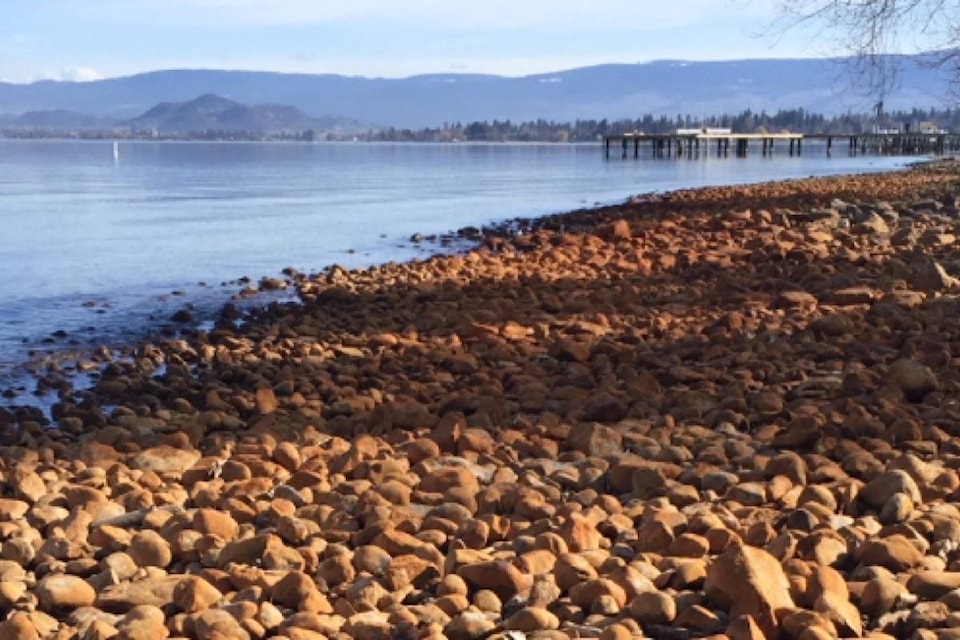Turns out the rocks along a stretch of Cedar Creek Park have taken on an orange tinge for perfectly natural reasons.
A spokesperson from the Ministry of Environment and Climate Change Strategy said the reddish-orange colour appearing on the rocks is a result of iron bacteria.
This type of iron bacteria precipitate happens frequently in the shallow water areas of local lakes.
As for the slimy film on the water around the rocks, that’s also a byproduct of nature and the life cycle of plants.
“Sometimes there is also blue-green oil like streaking around the red precipitate that people assume is oil or gas dumped in the environment,” said the spokesperson. “Most of the time it’s not, the streaks are actually natural oils from decaying plant material. The key observation is odour, or in this case, no odour (i.e. there is no gas odour present).”
It’s all noticeable because lake levels begin to drop this time of year and the snow melts off the foreshore, exposing the beaches.
READ MORE: HIGH FLOOD RISK
The reason for this year’s particularly low lake level is last year’s flooding.
“We’ve been dropping the lake by half-a-centimetre per day,” Shaun Reimer, section head for public safety and protection with the Ministry of Forests, Lands and Natural Resource Operations.
“What we’ve been doing is really trying to hit those target levels. We’ve been manipulating the flow to continue to ensure that happens.”
Currently, Okanagan Lake is 40 centimetres lower than this time last year, Reimer said.
At the same time, the snowpack is at record levels.
“The Okanagan is at 152 per cent. It’s the highest of any basing alongside the Similkameen,” said Jonathan Boyd, River Forecast Centre hydrologist.
To report a typo, email:
newstips@kelownacapnews.com.
kmichaels@kelownacapnews.com
Like us on and follow us on .



